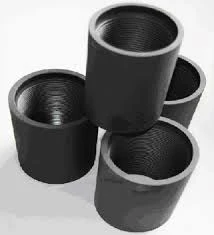- Afrikaans
- Albanian
- Amharic
- Arabic
- Armenian
- Azerbaijani
- Basque
- Belarusian
- Bengali
- Bosnian
- Bulgarian
- Catalan
- Cebuano
- Corsican
- Croatian
- Czech
- Danish
- Dutch
- English
- Esperanto
- Estonian
- Finnish
- French
- Frisian
- Galician
- Georgian
- German
- Greek
- Gujarati
- Haitian Creole
- hausa
- hawaiian
- Hebrew
- Hindi
- Miao
- Hungarian
- Icelandic
- igbo
- Indonesian
- irish
- Italian
- Japanese
- Javanese
- Kannada
- kazakh
- Khmer
- Rwandese
- Korean
- Kurdish
- Kyrgyz
- Lao
- Latin
- Latvian
- Lithuanian
- Luxembourgish
- Macedonian
- Malgashi
- Malay
- Malayalam
- Maltese
- Maori
- Marathi
- Mongolian
- Myanmar
- Nepali
- Norwegian
- Norwegian
- Occitan
- Pashto
- Persian
- Polish
- Portuguese
- Punjabi
- Romanian
- Russian
- Samoan
- Scottish Gaelic
- Serbian
- Sesotho
- Shona
- Sindhi
- Sinhala
- Slovak
- Slovenian
- Somali
- Spanish
- Sundanese
- Swahili
- Swedish
- Tagalog
- Tajik
- Tamil
- Tatar
- Telugu
- Thai
- Turkish
- Turkmen
- Ukrainian
- Urdu
- Uighur
- Uzbek
- Vietnamese
- Welsh
- Bantu
- Yiddish
- Yoruba
- Zulu
what are the differences between casing and tubing?
The Differences Between Casing and Tubing in Oil and Gas Industries
In the oil and gas industry, the extraction of hydrocarbons from beneath the earth’s surface involves a complex system of pipes and structures. Among the most crucial components in this system are casing and tubing, which serve distinct yet complementary roles in the drilling and production processes. Understanding the differences between casing and tubing is essential for anyone involved in this sector, as each plays an integral role in ensuring the efficiency and safety of oil and gas operations.
Definition and Primary Functions
Casing refers to the series of steel pipes that are installed in a drilled well to provide structural integrity and protect the borehole. It is set into place after the drilling process has been completed to line the well and prevent the walls from collapsing. Casing serves multiple essential functions, including isolating different rock layers, preventing the contamination of groundwater, and protecting against the intrusion of surface water and gases into the wellbore. Furthermore, casing is meant to withstand high pressure and temperature conditions often found deep underground.
On the other hand, tubing is the smaller diameter pipe that runs inside the casing. Its primary function is to transport the oil and gas from the reservoir to the surface. Unlike casing, tubing is designed to withstand dynamic pressures and varying temperature conditions, as it is constantly transporting production fluids. Tubing can also be easily removed and replaced when necessary, allowing for maintenance and the installation of production equipment such as pumps.
Key Differences
1. Purpose and Installation The primary difference between casing and tubing lies in their purpose and the context in which they are installed. Casing is installed first during the drilling process to ensure well stability, while tubing is inserted later when the well is prepared for production.
what are the differences between casing and tubing?

2. Diameter and Size Casing pipes typically have a larger diameter compared to tubing. This design facilitates the creation of an annular space between the casing and the tubing, allowing for the flow of production fluids as well as insulating the wellbore from external elements.
3. Material and Strength Both casing and tubing are made from steel, but they might differ in their thickness and strength characteristics. Casing is usually thicker and stronger to withstand external pressures and forces from the surrounding geology, while tubing is made thin but strong enough to handle the internal pressures from the fluids being transported.
4. Maintenance and Longevity Casing is a permanent feature of the well and requires minimal maintenance once installed. However, tubing is subjected to wear and tear due to the corrosive nature of the produced fluids and requires regular inspection and maintenance. Tubing can be replaced or repaired, whereas casing typically remains intact for the life of the well.
5. Cost Implications The costs associated with casing and tubing can vary significantly. Casing represents a significant upfront investment due to its size and the complexities involved in its installation. Conversely, tubing costs may be lower, but due to the need for regular maintenance and potential replacements, these can add up over time.
Conclusion
In summary, casing and tubing are two fundamental components of oil and gas wells, each serving distinct purposes that are crucial for the overall success and safety of hydrocarbon extraction. While casing provides the essential structural support to the wellbore, tubing facilitates the transportation of oil and gas to the surface. Understanding the differences between these two elements is vital for industry professionals, as both play integral roles in ensuring that wells operate safely and efficiently. As technology and techniques continue to evolve in the oil and gas sector, the design and materials of casing and tubing will also advance, further enhancing their effectiveness in energy production.
-
Tubing Pup Joints: Essential Components for Oil and Gas OperationsNewsJul.10,2025
-
Pup Joints: Essential Components for Reliable Drilling OperationsNewsJul.10,2025
-
Pipe Couplings: Connecting Your World EfficientlyNewsJul.10,2025
-
Mastering Oilfield Operations with Quality Tubing and CasingNewsJul.10,2025
-
High-Quality Casing Couplings for Every NeedNewsJul.10,2025
-
Boost Your Drilling Efficiency with Premium Crossover Tools & Seating NipplesNewsJul.10,2025







